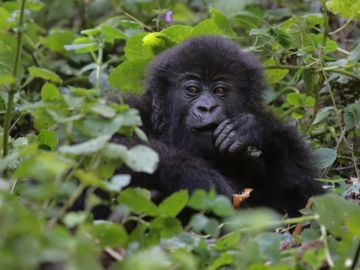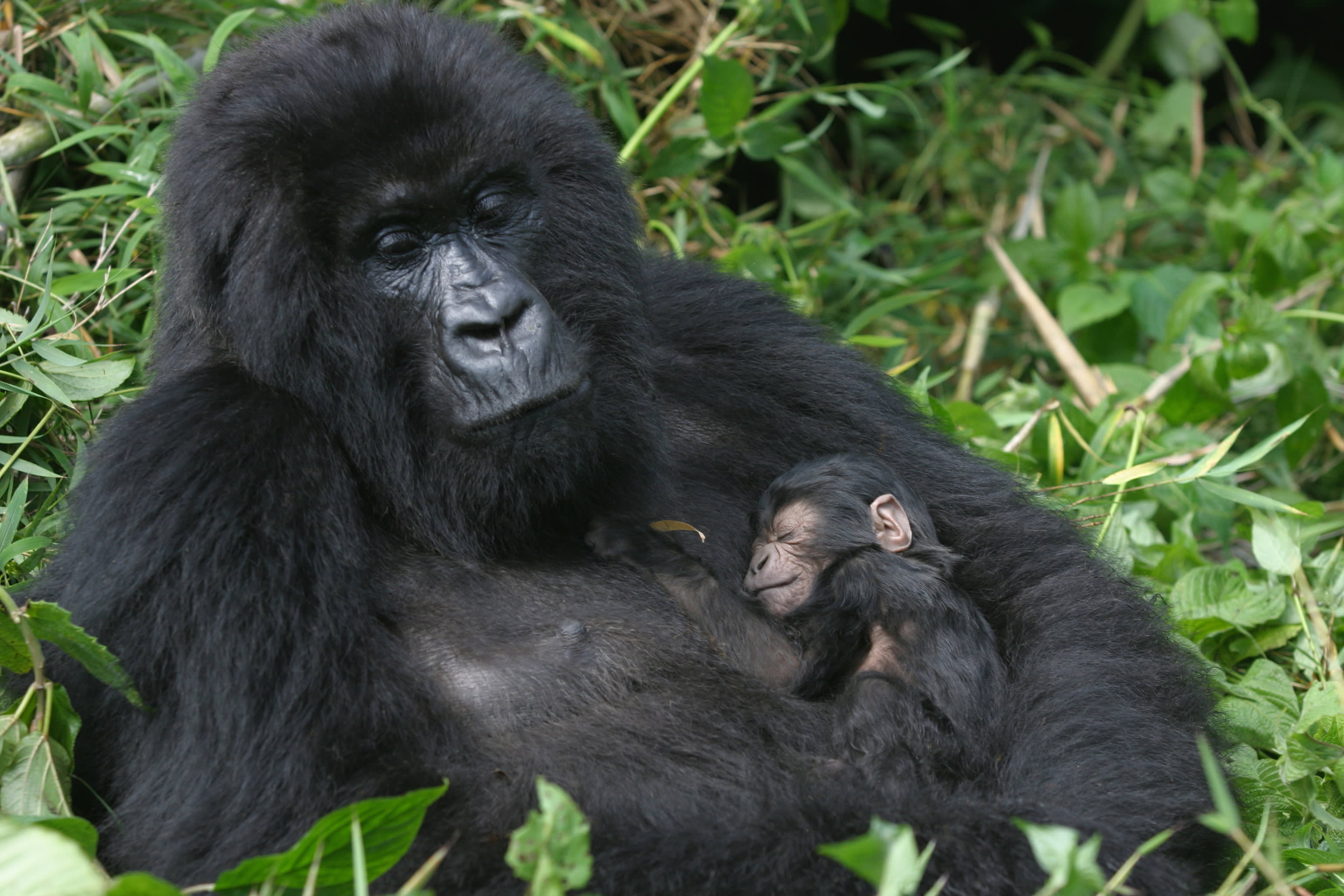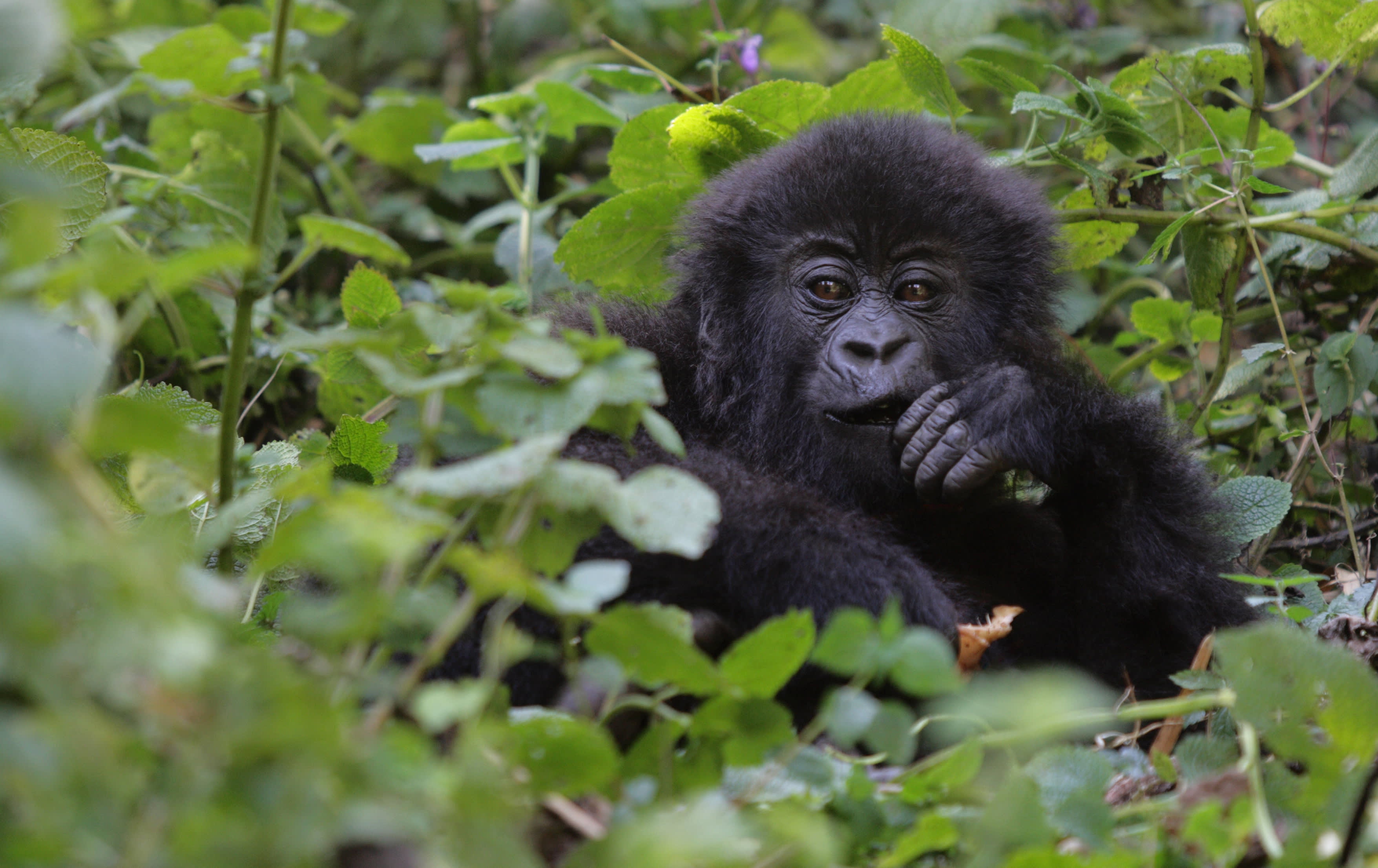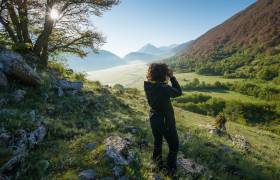Read time – 3 minutes
Concealed under mist veiled hills and a thick blanket of rainforest canopy, over half the world’s Mountain gorilla population live on the verge of the Rift Valley.
Bwindi Mountain Gorillas
Mountain gorillas have survived in The Bwindi Impenetrable Forest in Uganda thanks to the commitment of conservation teams, many of which have been directly supported by wildlife tourism.
It can take up to five years for a gorilla family to become comfortable in the presence of a group of tourists. Longstanding efforts to build this rapport between human visitors and the Bwindi Mountain gorillas have allowed wildlife enthusiasts to watch these critically endangered animals in their natural habitat, and see conservation efforts first hand.
Spending one precious hour in the company of these incredible animals, watching a family of up to 10 gorillas sleep feed and play, is one of the most sensational experiences.
Cutting back swinging vines and rich green vegetation, it can sometimes take up to 3 hours to locate these coal coloured gentle giants.
Conservation Project in Uganda
The conservation project in Uganda began just under 25 years ago and the census helps researchers to understand how successful current conservation efforts are, and what other actions are necessary to bring the species back from the brink of extinction.
The eagerly awaited 2018 census of Bwindi Impenetrable Forest’s Mountain gorillas began in March. The census is split into two stages, with the next stage commencing in October.
Since the 1990s when this conservation effort first began, the Bwindi population has grown to over 400 gorillas. Thanks to a recent baby boom, the upcoming census is expected to show another population increase.
A dedicated team of rangers, wardens and Uganda Wildlife Authority Staff will take on the enormous task of combing 321sq km of dense forest searching for evidence of gorilla activity, including nests, faecal samples and signs of movement.
The gathering of genetic information also helps to identify individual gorillas and ensure they are not counted twice.
Working at altitudes of up to 2607m the research team will begin the complex process of analysing changes in the population, as well as assessing the impact of threats from environmental degradation and human interferences such as poaching and disease.
No mountain gorillas have ever survived in captivity, proving just how fundamental it is to protect their natural habitat.
As well as evaluating the effectiveness of current conservation strategies, the teams will investigate factors to ensure the health and growth of the population in the future. We are keeping our fingers tightly crossed that this year’s census brings more good news for the Mountain gorilla.
Visit one of the world’s most biologically diverse rainforests, teeming with flora and fauna, and see these beautiful and endangered creatures for yourself!
Take a look at our gorilla wildlife trips below.


 Mountain gorilla
Mountain gorilla


